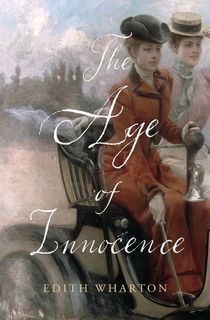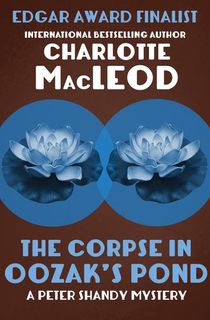Taking its name from a collaboration between Mark Twain and Charles Dudley, the Gilded Age lasted roughly from the 1870s to the early 1900s. The age is characterized by excess, rampant political gain and corruption, and rapidly developing innovations. Families that held incredible power still adorn New York streets, buildings, and banks. The names of Astor, Hearst, Vanderbilt, and J.P. Morgan are among the most well-known. This is the era that led to the coining of the term “conspicuous consumption” by Thorstein Veblen. The wealthy threw lavish parties, built enormous mansions, and commissioned large, extravagant wardrobes.
However, the disparity between the upper and lower classes was incredibly sharp. It’s estimated that in the 1890s, the average annual income of the majority of the country was $380—just $11,740.25 in 2022. Immigrant families, rural populations, and others considered to be in the lower class faced harsh work environments, substandard living conditions, and a host of issues that the upper class would never have had to face.
If you’re interested in digging more into the Gilded Age, whether you want the glimmering halls on Fifth Avenue or the tenements of the lower East Side, and whether you’re looking for fact, fiction, or a blend of both, this list has you covered.

The Age of Innocence
Released in 1920 and originally serialized in 4 parts, this book won the 1921 Pulitzer Prize. It brings an Austen-esque feel into the glimmering society of late 1800s New York. The story follows Newland Archer, a lawyer engaged to May Welland, a young socialite. Both seem pleased with the arrangement—until the return of May’s cousin disrupts the picture of their idyllic future.
Countess Ellen Olenska has recently separated from her husband, a Polish count. Ellen is certain that her life as she’s known it has ended. Archer can’t help his attraction to Ellen and finds himself torn between an ordinary life with May, or a life riddled with shock and scandal with Ellen.

Death Of a Robber Baron
If you’re interested in this period and looking for something a little darker in the dazzling Gilded Age, look no further than this scintillating mystery. Set in 1891, Mrs. Pamela Thompson is working to make the world a better place through charity. Despite these good deeds, the world has something a bit less hospitable coming Pamela’s way. When her husband’s investments tank, taking her trust fund down with them, Pamela finds herself without any of the comforts that she’s known before.
To support herself, Pamela finds a job as a store detective at Macy’s, a position that has her watching customers and ensuring that nothing is stolen. Pamela has a sharp eye, and a flair for catching people out for their ill deeds. In fact, her skill is so striking that she’s hired out to handle a private theft for Henry Jennings—the author of her misfortunes.

Dangerous Betrayal
The sinking of the Titanic is one of the most well-known disasters in history. It spawned multiple movies and one tear-jerking song by Celine Dion. This ‘What If’ book examines the tragedy from a new angle—as a plot constructed by the Teslas, Nicola and his nephew, Vito. The wealthy of the age have taken advantage of Tesla and his inventions one too many times, and Vito is determined to set a wrong right. He plans on taking just one man hostage—but sends an entire ship full of people into the freezing Atlantic.
When only evidence to be found may be lying at the bottom of the ocean, British and American authorities alike are trying to reckon with a response to this tragedy. Whether or not Vito’s sabotage is uncovered remains to be seen.
Related: 16 Essential Titanic Books

The Corpse in Oozak's Pond
This sixth Peter Shandy book finds the professor prying into a century-old mystery. The Agricultural College in a town called Balaclava is ringing in Groundhog Day. Their annual ice-skating plans are spoiled by the Oozak’s only partially-frozen pond. The revelers are horrified to find that there’s a corpse just under the ice—someone that’s been drowned. The fashion of the victim is in the style of one Augustus Buggins, the founder of the college, who was murdered a century go in precisely the same manner.
This mystery is an uphill battle. With a mostly decomposed corpse, minimal evidence, and members of the Buggins family unwilling to delve into the truth, Professor Shandy and his wife, Helen, face a mystery that puts them on thin ice.

The Gilded Age: A Tale of Today
The book that gave the age its name, this satirical work critiques the people and politics of this indulgent time in American History. It tracks two parallel stories: one of a wealthy people, and one of a poor family. Warner and Twain took the novel’s writing in sections, with Warner writing the stories surrounding various elite, and Twain writing about the poor family, the Hawkins.
The class competition is drawn the most acutely in the chapters set in Washington D.C. The backdrop of the nation’s capital offers the slate to highlight the struggles of the average American and the pretentious nouveau riche.

A Well-Behaved Woman: A Novel of the Vanderbilts
The year: 1883. The place: New York. The country is still recovering from the Civil War, and Alva Smith’s family is among them. Her family lost its fortune over the course of the war. In a move that should reelevate them, Alva marries into the Vanderbilts. However, as the prestigious family’s wealth is newly acquired, they’re scorned by the city’s oldest and wealthiest families. The path to social acceptance on the stalwart and proper Mrs. Caroline Astor.
Alva takes ambitious tacks to worm the Vanderbilts into the heart of New York’s society. She would go on to host lavish costume balls, to design and supervise the building of nine extravagant mansions, and to force her daughter to marry an English Duke, all in the pursuit of greatness and acceptance. This biographical fiction novel takes on the life of one of the most well-known socialites and spins a tale of greed, friendship, and ambition.

The Husband Hunters
Alva Vanderbilt is just one of the women who married their daughters to English aristocracy. Her daughter, Consuelo, was married to the ninth Duke of Marlborough. In the face of Mrs. Astor’s staunch protection of upper-class New York, ambitious mothers sought entrance into the social scene with their children’s acquisition of titles.
Anne De Courcy outlines the conditions around which these women were raised, the challenges they faced in competing with other young women for marriages, and the reasoning behind an English title holder wanting to marry an American. Her explanation doesn’t end simply with engagement or marriage—De Courcy delves into the lives that these young women led once married and titled.

The Gilded Hour
If you’re looking to immerse yourself in the communities of New York, away from the glamor of Fifth Avenue, try The Gilded Hour. The first book in The Waverly Place Series, this book introduces readers to Anna and Sophie Savard, orphaned cousins sent to their Aunt Quinlan’s home in Manhattan. They go on to attend the Woman’s Medical School. It’s here that their paths diverge.
Sophie, an obstetrician and a woman of color, finds herself struggling with what she knows is morally right, what’s socially acceptable, and the oath that she took when she became a doctor. Anne, alternately, works as a physician and surgeon, and faces her past as she works at St. Patrick’s Orphan Asylum. As she vaccinates the inhabitants of the Asylum, she meets four children that remind her of her own beginnings.




